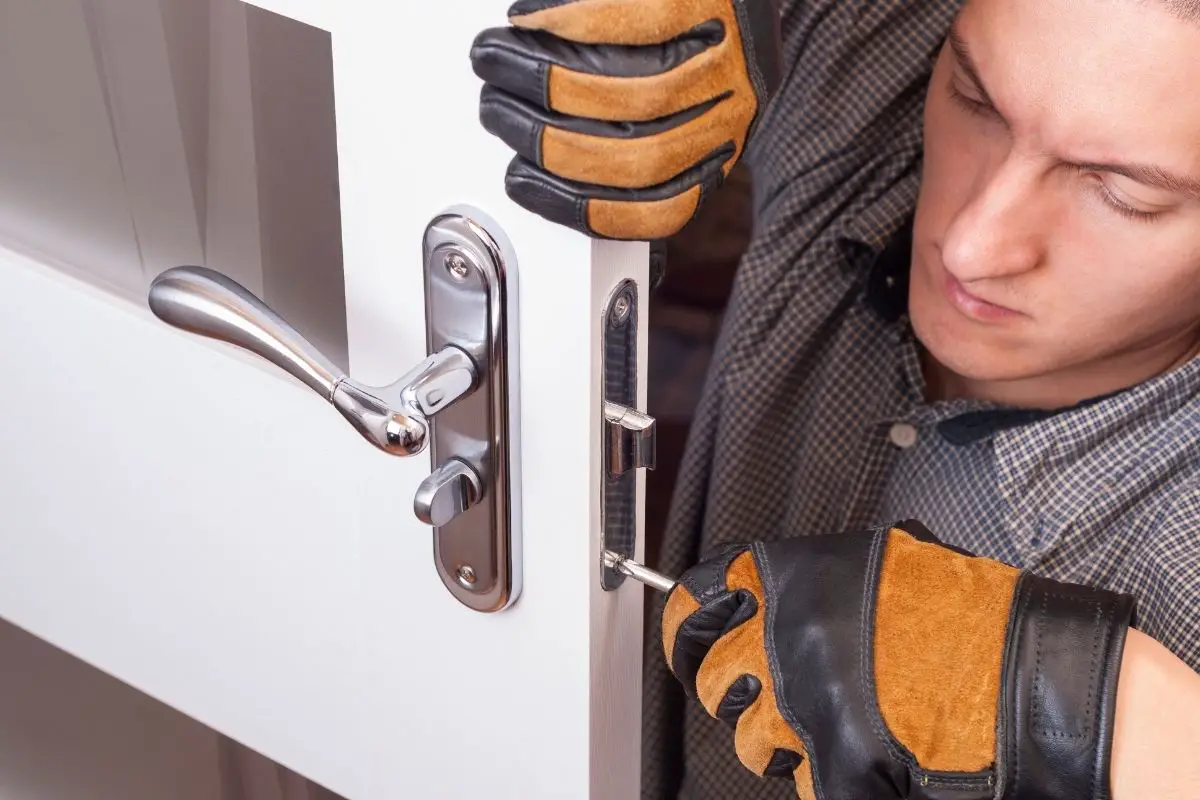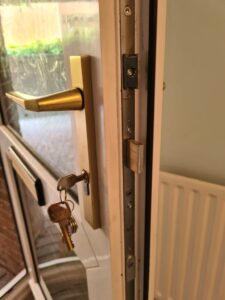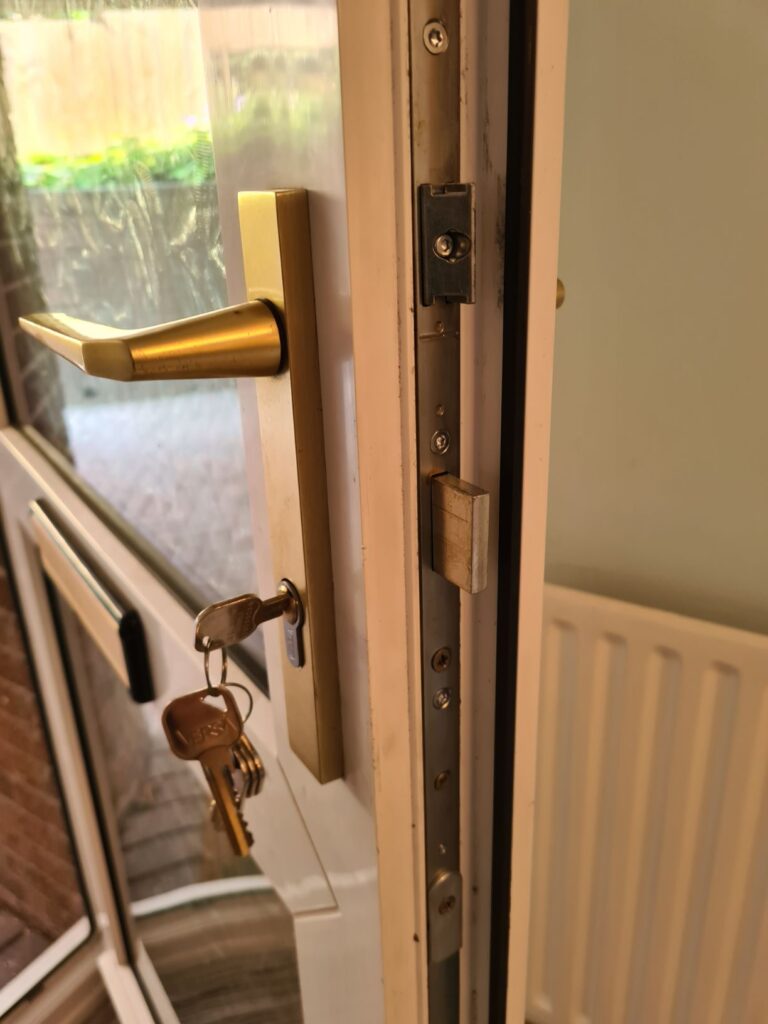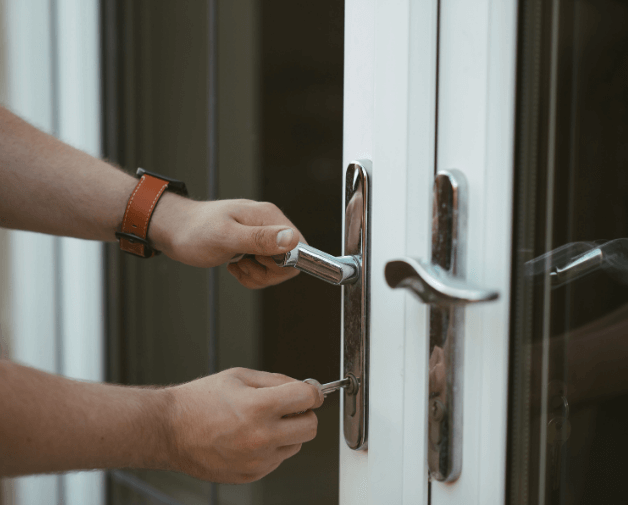UK homeowners widely prefer UPVC doors because of their exceptional durability, energy efficiency, and minimal maintenance needs. However, similar to any mechanical system, UPVC door mechanisms may experience occasional issues that impact their performance. While it’s advisable to consult professionals for complex problems, there are troubleshooting measures you can undertake on your own before contacting a locksmith. In this exclusive blog post, we, a reputable locksmith service, aim to equip you with valuable DIY tips to effectively troubleshoot prevalent UPVC door mechanism repair problems. By following these suggestions, you can swiftly identify and address minor issues, allowing you to save both time and money in the process.
Difficulty in Opening or Closing the Door
If you’re experiencing difficulty in opening or closing your UPVC door, try the following troubleshooting steps:
- Check for Obstructions: Inspect the area around the door to ensure there are no obstructions such as furniture, mats, or debris that may be hindering its operation.
- Lubricate the Moving Parts: Apply a silicone-based lubricant to the hinges, handles, and locking mechanism. This can help reduce friction and improve the door’s smooth operation.
- Adjust the Door Alignment: Observe the door as you open and close it. If you notice misalignment or rubbing against the frame, you may be able to adjust it by tightening or loosening the screws on the hinges or realigning the door frame.
Stiff or Loose Door Handle
If you’re experiencing a stiff or loose door handle, follow these troubleshooting steps:
- Tighten the Handle Screws: Check if the screws on the handle are loose. Using a screwdriver, tighten them gently to secure the handle in place. Be cautious not to overtighten as it may cause damage.
- Lubricate the Handle Mechanism: Apply a small amount of silicone-based lubricant to the handle mechanism. Work the handle back and forth to distribute the lubricant evenly and improve its movement.
Faulty Euro Cylinder
A faulty euro cylinder can cause issues with inserting or turning the key. If you’re facing these problems, try these troubleshooting steps:
Clean the Euro Cylinder: Dust, debris, or dirt can accumulate within the euro cylinder, affecting its performance. Use a compressed air canister or a small brush to clean the cylinder and remove any obstructions.
- Lubricate the Euro Cylinder: Apply a small amount of graphite-based lubricant or a silicone-based spray into the keyhole. Insert and turn the key several times to distribute the lubricant within the cylinder.
- Check for Damage: Inspect the euro cylinder for any visible signs of damage, such as a bent keyway or a broken cam. If you notice any damage, it’s best to replace the euro cylinder with a new one.
Worn-out Locking Mechanism
If the locking mechanism is worn-out and causing difficulties in locking or unlocking the door, try these troubleshooting steps:
- Clean the Locking Mechanism: Similar to the euro cylinder, the locking mechanism can accumulate dirt and debris over time. Clean it using a small brush or compressed air canister to remove any obstructions.
- Lubricate the Locking Mechanism: Apply a silicone-based lubricant to the locking points and other moving parts of the mechanism. This can improve their operation and reduce friction.
- Adjust the Striker Plates: If the door doesn’t align properly with the striker plates, you may need to adjust their position slightly. Loosen the screws holding the striker plates, reposition them to align with the locking points, and tighten the screws back securely.
Proper Maintenance Practices
To prevent future UPVC door mechanism problems, practising proper maintenance is crucial. Here are a few tips:
- Regular Cleaning: Keep the door and its components clean by wiping them with a soft cloth and mild detergent. Avoid using abrasive cleaners that can damage the UPVC surface.
- Lubrication: Periodically lubricate the hinges, handles, and locking mechanisms to ensure smooth operation. Use a silicone-based lubricant for optimal results.
- Weather Seal Maintenance: Inspect the weather seals for wear or damage. Replace them if necessary to maintain energy efficiency and prevent drafts.
- Handle with Care: Avoid excessive force or slamming the door, as it can strain the mechanism and lead to issues. Close the door gently to extend its lifespan.
While some UPVC door mechanism problems may require professional assistance, troubleshooting minor issues can be done through simple DIY steps. By following the tips outlined in this blog post, such as checking for obstructions, lubricating moving parts, adjusting alignments, tightening screws, cleaning and lubricating euro cylinders and locking mechanisms, you can potentially resolve common UPVC door problems on your own. However, for complex issues or if you are uncertain about performing DIY repairs, it’s always recommended to contact a trusted locksmith service with expertise in UPVC doors. They can provide professional guidance and ensure the proper functioning and security of your UPVC door mechanism.





